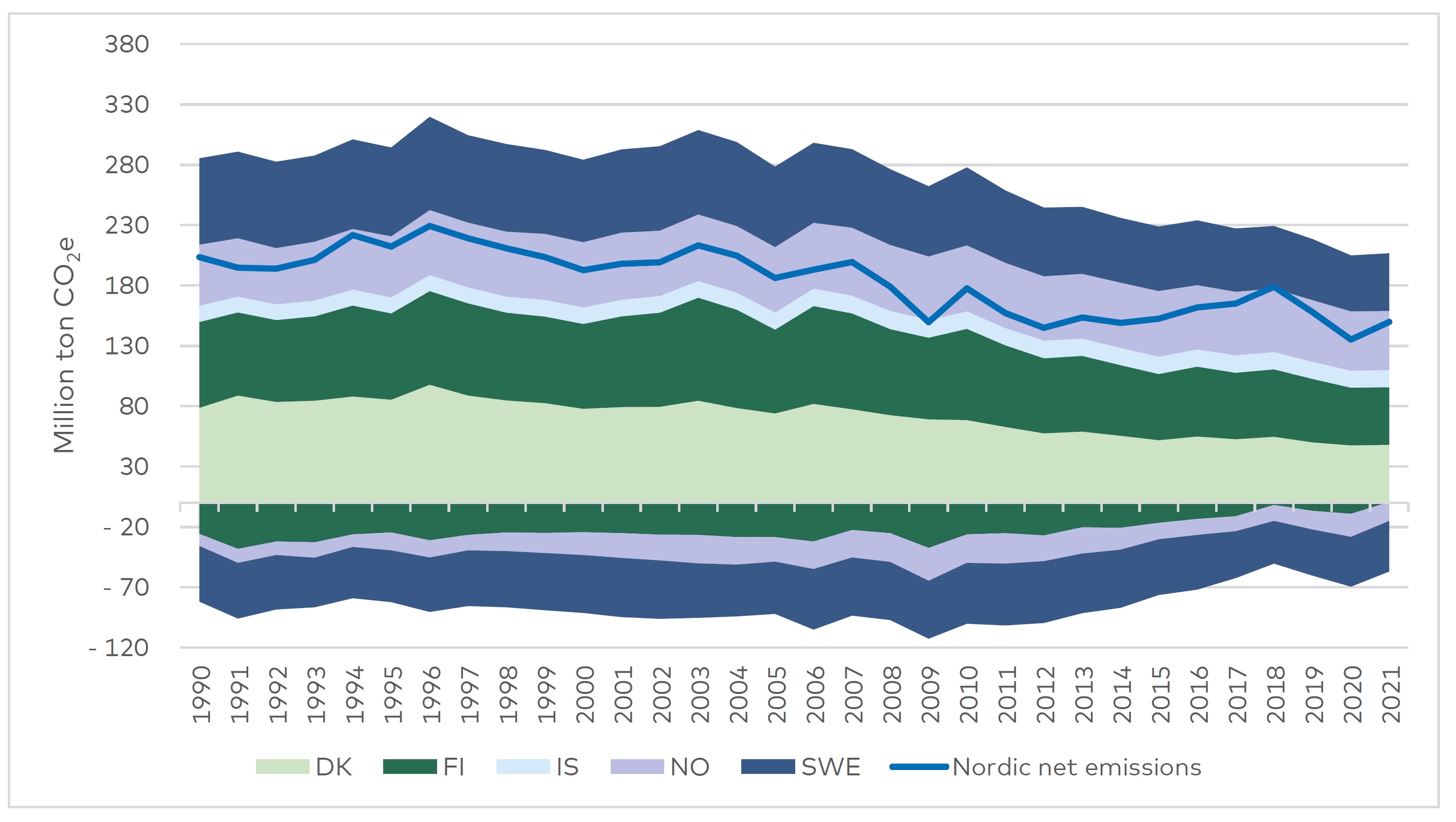Trends in Nordic emissions from 1990 to 2021
GHG emissions in the Nordic countries have been reduced by 26% in 2021, compared with 1990-levels (Table 2). This reduction is almost exclusively achieved through large emissions reductions in the energy sector (Figure 1).
The energy sector accounts for 55% of total net GHG emissions in the Nordic region. From 1990 to 2021, the GHG emissions in this sector have been reduced by 40% across the Nordic countries, whereas emissions from waste management have been reduced by 59%.
1990 | 2021 | Development 1990-2021 | |
|---|---|---|---|
Energy | 136 | 82 | -40% |
Domestic transport | 54 | 51 | -5% |
Industrial processes and product use | 30 | 25 | -17% |
Agriculture | 34.5 | 30.5 | -12% |
LULUCF | -65 | -45 | +31% |
Waste management | 14 | 6 | -59% |
Total | 203 | 150 | -26% |
Table 2: Territorial emissions (million tonnes CO2e) in the Nordic countries and percentage change 1990-2021, split by IPCC CRF sectors

Figure 1: Development of territorial GHG emissions and removal across the Nordic countries (incl. LULUCF), 1990-2021
For the domestic transport, industrial processes and agriculture, forestry, and land-use sectors, the development has been less positive, and the achievement of climate neutrality requires deep decarbonization within these sectors in the coming years. From 1990 to 2021, the GHG emissions from the Nordic domestic transport sector have been reduced by 5%. Emissions from industrial processes and product use have been reduced by 17%, and in agriculture, forestry, and land-use, the LULUCF-sink has shrunk by 31%, while emissions from agriculture have been reduced by 12%.